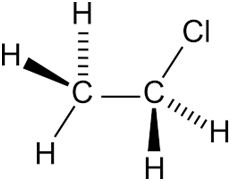 What is Chloroethane (Ethyl Chloride)?
What is Chloroethane (Ethyl Chloride)?
Chloroethane, commonly known by its old name ethyl chloride, is a chemical compound with chemical formula CH₃CH₂Cl, once widely used in producing tetraethyllead, a gasoline additive. It is a colorless, flammable gas or refrigerated liquid with a faintly sweet odor.
Uses
Ethyl chloride is used in the production of ethyl cellulose, use as a solvent, refrigerant, and topical anesthetic, in the manufacture of dyes, chemicals, and pharmaceuticals, and as a medication to alleviate pain associated with insect burns and stings. In the past, ethyl chloride was used in the production of tetraethyl lead, an anti-knock additive to leaded gasoline. Government-mandated reduction in the amount of lead additives used in gasoline in the United States and a shift to the use of unleaded gasoline has caused a drastic reduction in the amount of ethyl chloride required to produce tetraethyl lead.
Sources & Potential Exposure
Exposure to ethyl chloride may occur from the use of consumer products containing it. The acute (short term) effects of ethyl chloride from inhalation exposure in humans consists of temporary feelings of drunkenness, and higher levels cause lack of muscle coordination and unconsciousness. The chronic (long-term) health effects resulting from exposure to air containing low levels of ethyl chloride in humans is not known. Some animal studies indicate effects on the lungs, liver, kidneys, and heart due to exposure to ethyl chloride via inhalation. No studies were located regarding carcinogenic effects following ethyl chloride inhalation exposure in humans. A study by the National Toxicology Program (NTP) indicated that inhaled ethyl chloride is carcinogenic in female mice and may be carcinogenic in rats.Sources of possible ethyl chloride exposure include the inhalation of contaminated air and ingestion of contaminated drinking water at very low levels. The general population can be exposed to ethyl chloride by skin contact with consumer products that contain ethyl chloride such as solvents and refrigerants. Occupational exposure by inhalation or dermal contact with ethyl chloride can occur in industries such as medical and health services; automotive dealers and service stations; wholesale trade, electric, gas, and sanitary services; machinery (except electrical) and special trade contractors; fabricated metal productions; printing and publishing; painting; rubber and plastic products; and food.
Federal Regulations
EPA has not classified ethyl chloride for carcinogenicity.


 Americas
Americas Europe
Europe Français
Français Deutsch
Deutsch Italiano
Italiano Español
Español


